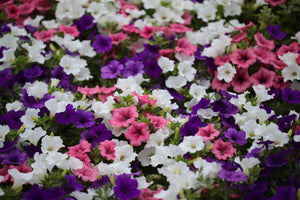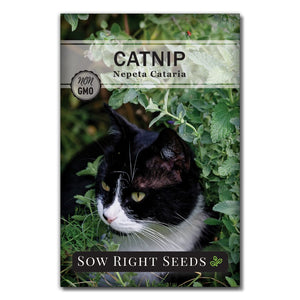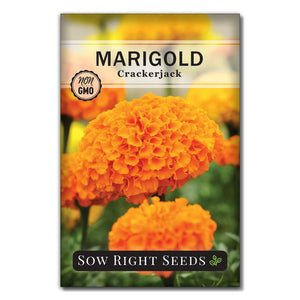3 Reasons Why Earwigs Might Actually Be Good For Your Garden!
PestsI have always been slightly horrified of earwigs. So when my sister complained about all the earwigs in her garden, I decided to investigate how to get rid of them. What I discovered is that although they give us both the creepy crawlies, earwigs do have an important role to play in the garden. In this article, we'll explore three reasons why earwigs might actually be good for your garden.

There are plenty of icky bugs to deal with in the summer, but earwigs might have the most interesting cinematic life. Thanks to all the old wives' tales and horror films, these critters often get a bad rap. Those intimidating pincers on earwigs, or "pincher bugs" as they're often called, look absolutely horrifying on the big screen.
But that begs the questions, "Are earwigs dangerous?" and "Are earwigs harmful to gardens?" While it's true that earwigs can damage plants, they also play several beneficial roles in the garden ecosystem. Understanding these benefits can help you see earwigs in a new light and appreciate their presence in your garden.
What are Earwigs or Pincher Bugs?
There are many species of earwigs, but the most damaging one in gardens migrated from Europe to North America around 1907. The common name, “pincher bug,” is more accurate as earwigs have nothing to do with ears or wigs.
These critters are nocturnal, opportunistic hunters who love to munch on a smorgasbord of organic matter. They favor the cover of darkness and will congregate in moist places with rotting organic material.
Earwigs die in the cold and are more likely to be found in warm or temperate climates. This may be why I haven’t noticed them in my Midwest garden, but I had many unpleasant interactions with them in the Southwest.

Earwigs: Appearance and Behavior
The infamous earwigs, or “pincher bugs,” are often mistaken for something out of a horror flick. (Especially when you zoom in on a picture and make it bigger than your head!)
These small, flat, brownish-black insects range from about .25 to 1 inch in length. They have six legs and two antennas that are typically about half their body length. At their rear, they have a set of pincers, scientifically known as cerci, that can look downright menacing. And if you ever get up close and personal (which I don't blame you if you don't want to), you'll notice that the males have curvy pinchers or forceps, while the females sport the straight-edge variety. These forceps may give them the appearance of something ready for battle, but they're mainly there for show and, on occasion, scuffles with each other.
Are Earwigs Dangerous to Humans?
When it comes to human interaction, earwigs are not the aggressive type. If you corner them, sure, they might give you a little nip with their pincers, but it's all bluff; those pincers are more of a defense mechanism against other insects than a weapon against us humans.
And remember, an earwig pinch is not a sign of aggression; think of it as their way of saying, "I need a little space, please!"
Having earwigs around is more of a nuisance than a danger, really. Despite the urban legends, they don't feed on human flesh, they're not out for your ear canals, and they certainly don't have a venomous sting. So, while they can be a bit of a garden pest and an uninvited house guest now and then, you can rest easy knowing that earwigs are not out to harm you or your family.

The Problem with Earwigs in the Garden
There are a few reasons why earwigs or pincher bugs become problematic in the garden. Although not as bad as an infestation of Japanese beetles, earwigs can damage your plants and fruit.
Problem 1: Plant Damage
Earwigs aren’t too picky and will eat a wide variety of plants. A few earwigs won’t do too much damage to a mature plant, but they can quickly munch through a tender seedling. When the earwigs come out at night, they’ll enjoy feasting on juicy young plants. They’ve been known to eat young bean plants and beets.
They like to burrow into dark, moist places. Sometimes, this is your cabbage and lettuce heads. They may also start munching on the tender leaves while they hang out there.
Earwigs also like to hide out in flowers where they can burrow deep in the petals. While in there, they’ll easily snack and damage your beautiful blooms. They can be an unpleasant surprise when you sniff a fragrant flower!
If earwigs are in your garden, you’ll notice earwig damage to leaves and petals. The holes they make have a ragged appearance, but unlike damage done by slugs and snails, there won’t be a shiny trail.
Problem 2: Fruit Damage
Earwigs have a good sense of smell and can tell when your fruit is ripe. They are known for climbing trees and eating peaches and apricots. But they will eat whatever is available, and any soft, ripe fruit is tempting. They will eat the silks on sweet corn, which keeps the plants from developing corn.
Earwigs leave ragged holes in leaves. On fruits and vegetables, you will see scratched-out areas where they’ve been eating.
I remember picking apricots and finding an earwig inside. They knew the ripest apricots and often got there first. It was not a pleasant experience.

The Benefits of Earwigs in the Garden
Now that you know the real damage earwigs do, we also need to highlight the reasons why “pincher bugs” or earwigs are beneficial in the garden.
Reason 1: Natural Pest Control
The first reason earwigs aren’t always pests is that they are natural predators of common garden pests. They eat aphids, mites, and insect larvae. If you’ve ever had an aphid infestation or too many spider mites, then you might want a few earwigs around.
So, although earwigs can damage plants, they can also help control the population of other pests. Sometimes, it is worth having them around for some natural pest control.
Reason 2: Decomposition Assistance
Earwigs are pretty much the janitors of the garden. They feed on decaying leaves, dead insects, and other organic debris, breaking it down into smaller pieces. This process helps to recycle nutrients back into the soil, promoting soil fertility and plant health. By contributing to the decomposition process, earwigs help maintain a healthy garden ecosystem and support the growth of your plants.
Earwigs love compost piles and decaying wood. In these places, their ability to help with decomposition is a plus. If earwigs are in your compost pile or other areas where they aren’t destructive, then you can recognize the role they play in assisting decomposition.
Reason 3: Enhancing Garden Biodiversity
Gardens are an amazing combination and balance of growth and decay. You need both to create fertile soil.
By being both predators and decomposers, earwigs interact with various other organisms in the garden, helping to create a balanced ecosystem. A diverse garden is more resilient to pests, diseases, and environmental changes.
Even though earwigs aren’t what you want crawling on you, they have a role to play in the garden. They are also a food source for birds, lizards, amphibians, and other garden visitors.
Encouraging a variety of insects, including earwigs, can lead to a more robust and thriving garden environment.

Getting Rid of Earwigs in the Garden
When deciding whether or not to get rid of earwigs, you might consider what damage they are doing. If you only have a few earwigs, they may be worth leaving alone. But if you have young seedlings or ripe fruits and there are a lot of earwigs, then you may want to set some traps to control the population.
First, to make sure it is earwigs that are causing the damage, go out in your garden at night and look for earwigs with a flashlight. These nocturnal insects will scurry away from the light. They like to hide in dark, moist places. By creating a hospitable environment, you can trap them at night.
You might want to give earwigs some time to eat aphids and other pest larvae. But then when your fruit starts to ripen, it’s time for some traps.
Effective Earwig Traps
You don’t need poisonous chemicals to get rid of earwigs. Because of their desire for damp, dark spaces, they are fairly easy to trap. Here are three very effective ways to trap earwigs.
1 - Rolled-up Paper Trap
A damp rolled-up piece of paper is a simple and effective way to lure in earwigs. It can be made with newspaper or any kind of paper you have on hand.
Overnight, they will roam the garden and then seek shelter in the damp paper when the sun comes up. All you have to do is pick up the paper and dispose of the earwigs. To be the most effective, use several sheets of paper. You can tap them out into a bucket of soapy water to get rid of them. The earwigs emit a foul smell that will attract more earwigs, so reusing the paper can be beneficial.

2 - Smelly Oil Trap
This DIY earwig trap is made with water, oil, and soy sauce. This trap is easy to make from a shallow plastic container with a lid.
Poke holes along the top, just below where the lid will fit.
Place the container into the garden so the holes are level with the soil.
Fill the container with at least an inch of water and add some soy sauce or bacon grease. The scent will lure them in.
Then add a layer of oil. This can be vegetable oil, tuna oil, or any cooking oil.
You can put the lid on top to keep other critters out.
Earwigs are attracted to the scent and will crawl in through the holes. Once inside, they won’t be able to get out of the oil.

3- Corrugated Cardboard Trap
For another nontoxic earwig trap, corrugated cardboard is excellent at trapping earwigs. This one is often used on fruit trees.
Moisten the cardboard and lay it under leafy plants or roll it up and tie it to the trunks of fruit trees. At night the pincher bugs will hide in the many crevices, and then in the morning, you can dispose of them. You can dump out the bugs and reuse the cardboard since they leave a smell that will help attract more earwigs the next night.

Although earwigs are among the most menacing-looking insects in the garden, they can also be beneficial. They are a natural pest control, help with decomposition, and increase biodiversity in healthy ways.
It’s reassuring to know that earwigs will not harm you, but they can be a garden pest in large numbers.
Earwigs do eat a wide variety of fruits and flowers and over the years their population can increase to be harmful to your garden. However, with careful management, you can enjoy the positive effects of earwigs in your garden.
Although I’ll never enjoy seeing the menacing-looking pinchers raised from ripe fruit, I can appreciate that these scary-looking insects help keep other pests, such as aphids, from overwhelming my garden.
If you’re still wondering if earwigs are a harmful garden pest, consider integrating natural pest management strategies and maintaining a balanced ecosystem. If you have any experiences or tips on managing earwigs, feel free to share them in the comments below.
Written by Beverly Laudie








Leave a comment